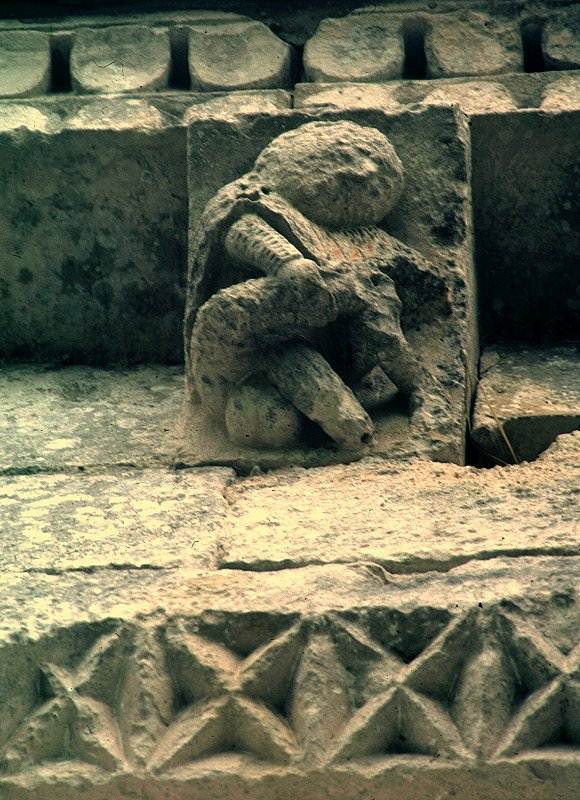
Saint-Léger-en-Pons (Charente)
A megaphallic thorn-puller (Spinarius) with his right
leg (broken at the foot) held up by his right hand,
thus revealing enormous apparatus of desire.

Compare with a female thornpuller at Béceleuf
and with a more worn male at Graimbouville (Seine-Maritime) in Normandy...
click for a corbel
depicting 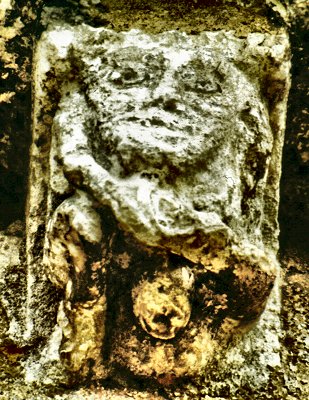 Avaritia on the same
apse
Avaritia on the same
apse
...and this granite example at Monterrei (Monterrey) (Pontevedra).
MegaphallThornpuller.jpg)
* * *
The famous Capitoline Bronzes (moved to the Capitoline Museum
in Rome in the 15th century)
included the Spinarius athlete removing the thorn from his foot
in such a manner as charmingly to reveal his penis.
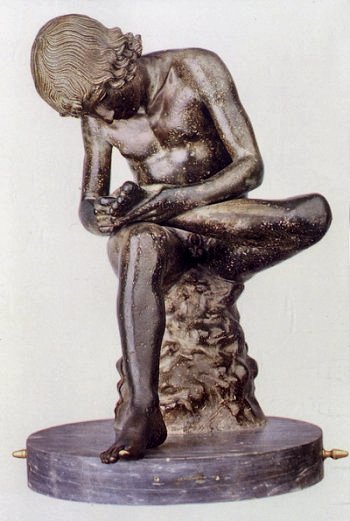
A good example of a late Roman depiction of the motif can be seen at the Musée Crozatier at Le-Puy-en-Vélay.
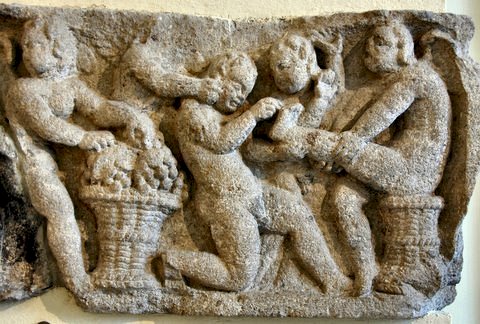
The scene is set during the grape harvest or a Dionysiac
rite, or both -
but the man with the thorn is not exhibitionist, rather it is the man removing
it for him.
Note that someone is pulling the latter's hair - or is it a tendril of a vine
?
In the Romanesque section of the same museum there is a fine
example
from 800 years or more later, who, similarly, is not exhibitionist.
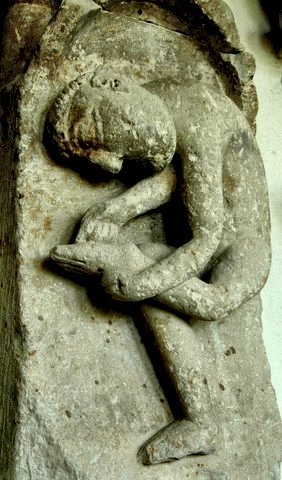
A discreetly-exhibitionist thornpuller dominates the wonderful
façade of the church at Aregno (Corsica),
indicating how powerful this motif and its message were in the 12th century.
 .
.
Click to see two more-obvious Corsican male exhibitionists.
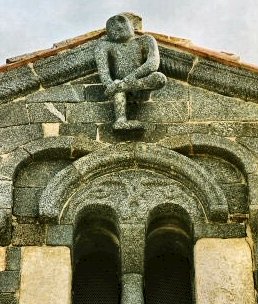
Note the entwined snakes over the window beneath.
A modern thorn-puller.

Wolfgang Tillmans - Anders pulling a splinter from his foot, 2004.
The Classical motif travelled to Northern India,
where a svelte and robed female
heavenly being can be seen amongst the hundreds of figures
on the 11th century Parasnath Temple at Khajuraho (Madhya Pradesh)
removing a thorn from the sole of her foot.